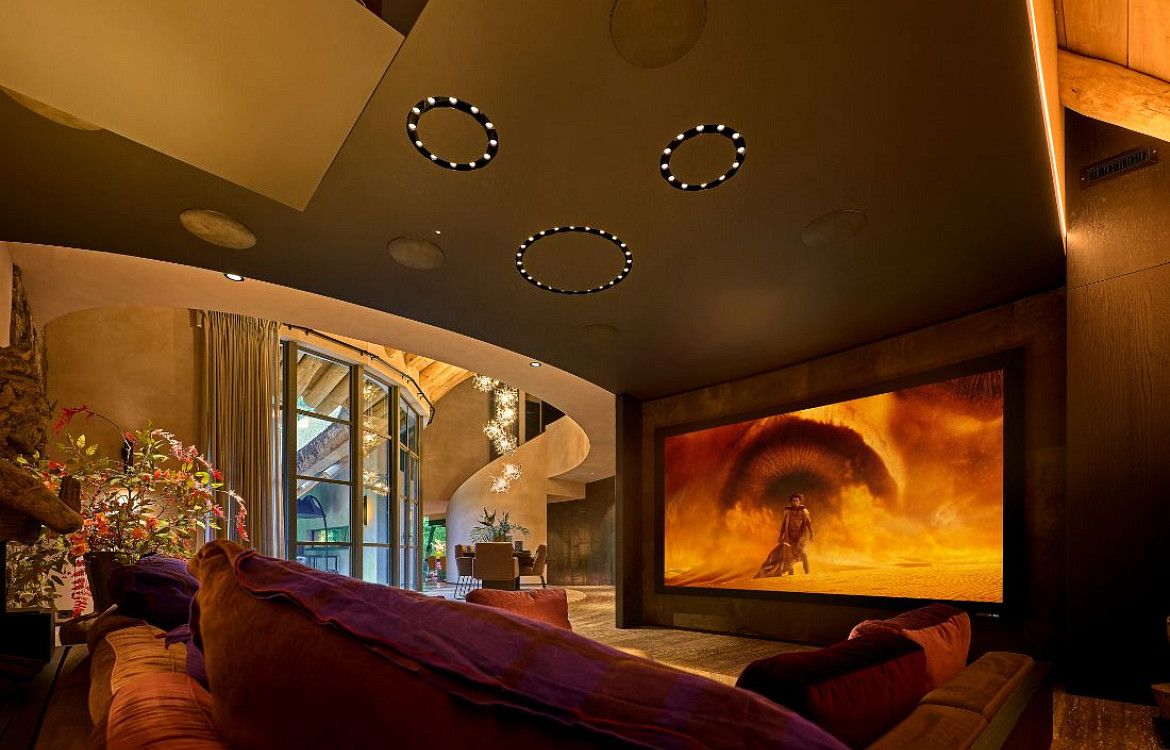



In the expansive Dutch landscape, adjacent to a nature reserve, a villa sympathetically blends the charm of nature with the marvels of modern technology.
This residence, crafted by integrator De Opera Domotica, architect Architenbureau de Vries-Theunissen, and interior desiger Designa, represents the convergence of ecological mindfulness with cutting-edge smart home solutions. Named the 'Storybook Cinema', this home is not merely a dwelling but a sanctuary that embraces both the environment and the latest in home automation.
Designed for a family of three and their two dogs, the villa reflects a natural, organic aesthetic while incorporating advanced technological systems. De Opera Domotica was tasked with delivering a fully integrated solution that prioritised security, audio-visual excellence, and energy management, all whilst adhering to the use of natural materials. The result is an exemplar of innovative thinking in sustainable design.
The journey began in 2020 but was interrupted due to the client’s lockdown in Indonesia, delaying progress until the end of 2021. Upon their return, significant modifications were made to the original plan, adding layers of complexity and creative problem-solving to the project. Initially, the cinema room featured a wall and a large fabric folding door separating it from the dining room. These were removed during construction, creating an open space that presented new challenges for audio and video performance. The seating arrangement also transformed from hammocks and bean bags to a custom sofa, which partially obstructed the speakers, necessitating inventive acoustic solutions.
Each room was meticulously planned to integrate high-quality speakers, in line with the client’s preference for Monitor Audio, ensuring exceptional audio experiences. The cinema room, adjacent to the dining room, was critical. The audio and video systems not only needed to perform flawlessly but also to harmonise with the villa’s aesthetic. The kitchen and the ‘Marrakesh’ chill room in the basement were equipped with Dolby 5.1 sound systems, while the pool house and swimming pool area required high-quality sound to complement the setting.
The ecological approach extended to the acoustic treatments within the home. Initially planned synthetic acoustic materials were replaced with clay walls, which offered superior absorption properties while maintaining the desired natural finish. To balance the hard flooring, a carpet and fabric sofa with matching cushions were introduced. Diffraction panels were strategically placed behind the screen between the front speakers, and the acoustic ceiling was crafted from flax and straw, sprayed with colour-coded open granules, ensuring adherence to the natural materials mandate.
However, the commitment to natural materials necessitated some compromises. The absence of synthetic acoustic measures meant alternative solutions were needed to manage sound quality. Clay plaster, with better acoustic properties than standard plaster, was used throughout. The removal of the wall and sliding/folding fabric door between the cinema and dining room necessitated creative placement of the surround and back speakers to maintain optimal sound distribution.
Despite these challenges, the media room is an exemplary integration of natural beauty and state-of-the-art technology, proving that with thoughtful planning and innovative thinking, it is possible to create a room that is both environmentally friendly and technologically advanced.


We have members all around the world. Find a CEDIA Smart Home Installer near you.
CEDIA Smart Home Installers